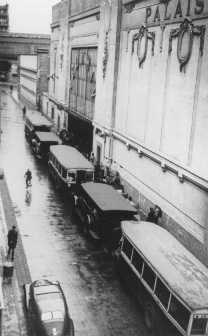On Holocaust EducationI.H.T. Op-Ed Contributor
By ALEKSANDER KWASNIEWSKI
Published: June 28, 2010
In an article on June 18, Kofi Annan, the former secretary general of the United Nations, wrote that the teaching of the Holocaust should focus more on preventing ethnic conflict and genocide.
Before questioning the value of Holocaust education,one should first address its goals:
What, exactly, are we trying to achieve in teaching about the Holocaust? Is it realistic to expect that the study of the Holocaust will diminish human rights abuses and racism, and instead nurture democracy and tolerance? Will mixing the narrative of the Holocaust with other types of atrocities really encourage better human behavior?
Accumulated experience from the field has proven that there are no short cuts. A trip to Auschwitz does not suddenly turn visitors into noble humanitarians. An hour’s lesson on the Holocaust will certainly not prevent the next Rwanda or Darfur.
Some of Kofi Annan’s thoughts, along with those of others, were discussed and debated at a recent Holocaust educators’ conference in which I also participated. Hundreds of educators and decision makers from around the world gathered at Yad Vashem in Jerusalem to grapple with these very questions and challenges.
The younger generations commonly view the Holocaust with indifference. Born in the early 1990s, they tend to view World War II as irrelevant to their everyday lives. Our job is to demonstrate how historical events, including the Holocaust, are unique opportunities to understand the world today. We must show that Holocaust education is a vital tool to glean from the past messages for today.
Superficial Holocaust education leaves no lasting impact. It will not overcome forces of racism and intolerance, or solve enduring social problems. Effective Holocaust education, focusing on the human story within the facts of history, does, however, foster greater understanding of the social processes that can lead to genocide.
Genuine, deep, long-term study of the Holocaust has the power to sensitize people, raise awareness of the other, help identify the preliminary warning signs of genocide, and put the brakes in place.
The Holocaust was the most extreme case of genocide. Indeed, because all the elements are present in the Holocaust — including, but not only: a murderous ideology, technological and bureaucratic means, deligitimization, classification, dispossession and mass murder — it illustrates processes that help us identify the potential for genocide.
Yet we must not delude ourselves: Holocaust education is a relatively recent phenomenon, and the number of primary and secondary school students around the world actually engaged in it is still relatively limited.
In Poland, as in much of Europe, the Holocaust is, and must be, part of our curriculum, present in the public discourse, and at the heart of 20th century European history.
It is the starting point from which Europeans need to address the breakdown of universal values that allowed such a cataclysmic event to occur, and from which we must seek the answers as to how to ensure that such a breakdown can never again happen.
Without being anchored in the defining context of the Holocaust, haphazard exposure to a mélange of disparate conflicts, ethnic cleansings and other atrocities serves only to blur understanding and learning.
While the Holocaust was a unique event, targeting the Jews in particular, its nature lends it universal meaning. Taking place in the heart of civilized Europe in the 20th century, the Holocaust shook the very foundations of our shared existence. Paradoxically, its study contains and provides the very tools for rebuilding that foundation.
Mr. Annan urges us to rethink “traditional” Holocaust education, and indeed, experts at Yad Vashem and other institutions are constantly exploring different avenues in this field. Dedicated educators use all the tools at their disposal to create multidisciplinary, country-specific and age-appropriate Holocaust studies for the long term. They are honing an educational model that adds layers of understanding to our ability to cultivate human rights and tolerance in society and adds depth to our ability to shape a brighter future.
Aleksander Kwasniewski was the president of Poland from 1995 to 2005.
.JPG) By Larry Kolano
By Larry Kolano




 This photo (above) shows Frieda and Eva in front of their “barracks” during their internment.
This photo (above) shows Frieda and Eva in front of their “barracks” during their internment.





